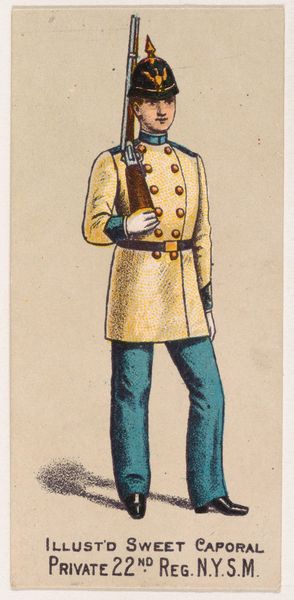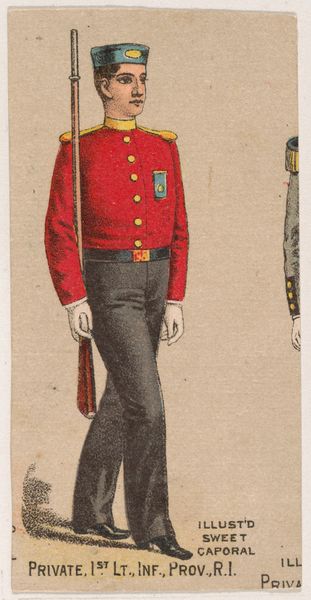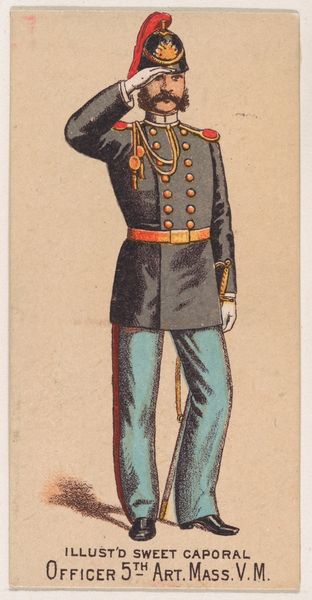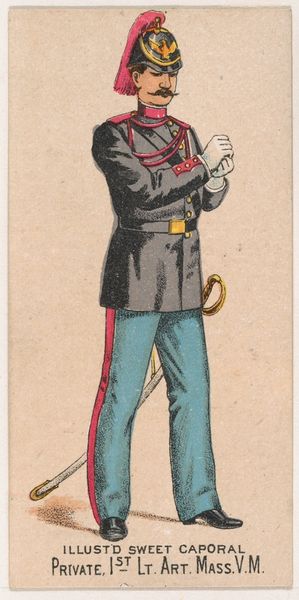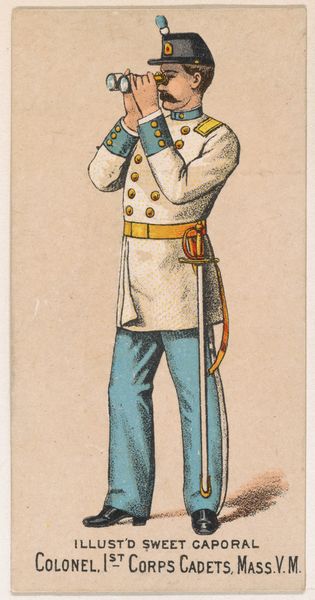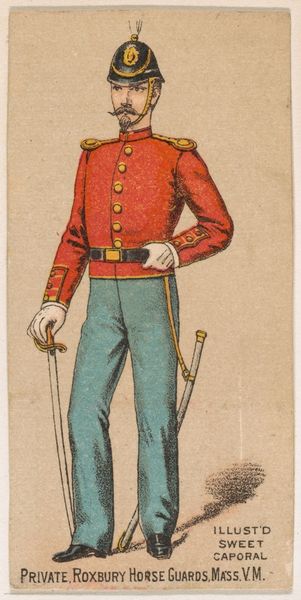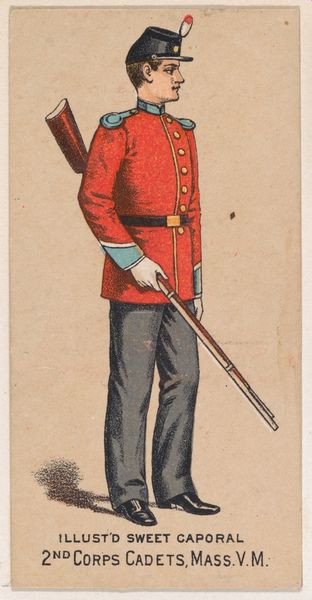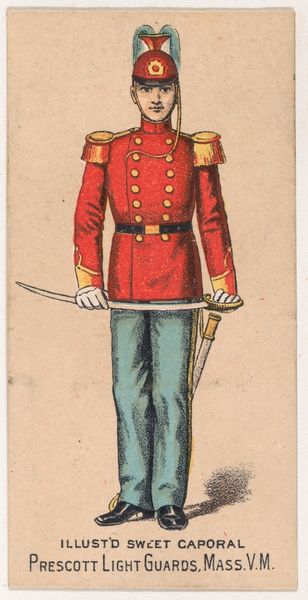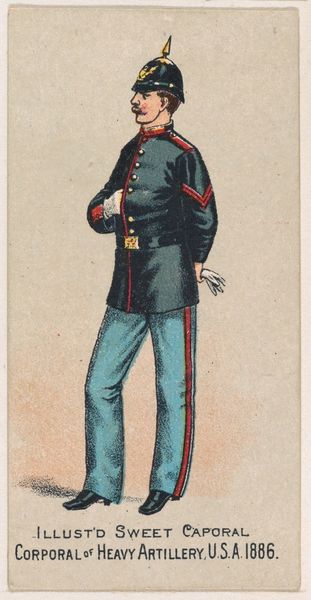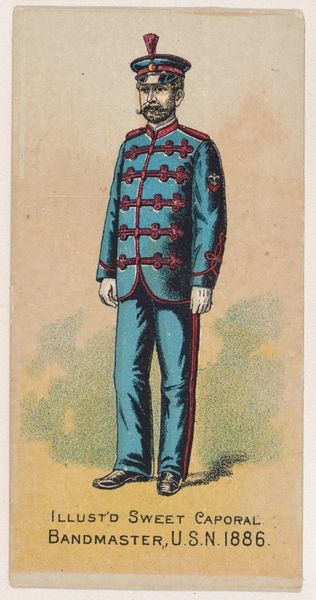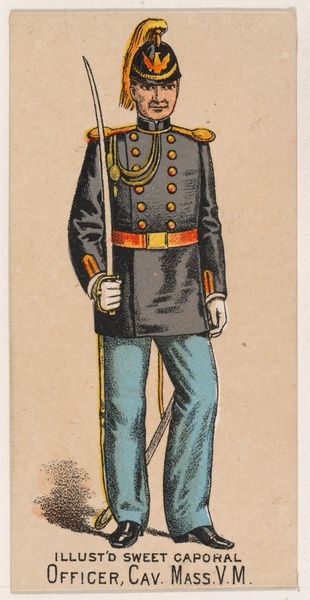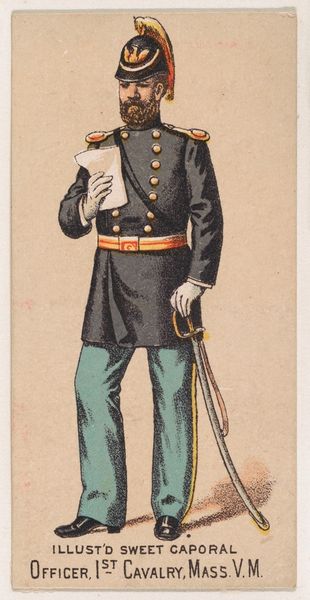
Private, 9th Regiment, Massachusetts, V.M., from the Military Series (N224) issued by Kinney Tobacco Company to promote Sweet Caporal Cigarettes 1888
0:00
0:00
drawing, print
#
portrait
#
drawing
# print
#
caricature
#
caricature
#
men
#
genre-painting
#
realism
Dimensions: Sheet: 2 3/4 × 1 1/2 in. (7 × 3.8 cm)
Copyright: Public Domain
Editor: Here we have “Private, 9th Regiment, Massachusetts, V.M.,” a print from 1888 by Kinney Brothers Tobacco Company, meant to promote Sweet Caporal Cigarettes. The soldier is very still, aiming a rifle. It feels like a captured moment. How do you interpret this image? Curator: It's fascinating how mundane commercial art like this can tap into potent symbols of duty and nationhood. The uniform itself becomes a visual shorthand for the virtues—or at least, the *perceived* virtues—associated with military service. Red coats in particular evoke Britain, revolution. But do you think the average consumer at the time would’ve considered those symbols consciously? Editor: Probably not consciously, no, but they would recognize the imagery and connect with it, even subconsciously. It looks like the intention may be to provoke a sense of pride or respect associated with military service. Is there a reason the tobacco company would've chosen this subject for its advertisements? Curator: Precisely. This image participates in the larger cultural project of defining and idealizing American identity in the late 19th century. Kinney Brothers is leveraging patriotism. War heroes solidify cultural narratives, influencing societal ideals. It presents a carefully constructed image designed to sell not just cigarettes, but also a particular vision of masculinity and national belonging. Have you seen how the other cards look? Editor: No, just this one. What more should I be considering? Curator: Well, consider this in connection to others. Kinney produced dozens of these cards celebrating police officers, firemen, baseball stars... Consider, in particular, how such popular, widely circulated imagery contributed to constructing an image of American identity, and whether the associations were positive or problematic. Editor: So it's about using an archetype to connect to consumers and make their brand synonymous with larger national ideas and positive values. The figure then represents strength and honor through patriotic symbolism. I will certainly do further research on this line. Curator: Exactly! A symbol functions within a system of representation. Only then can we decode these cards and recognize what the tobacco company was really selling.
Comments
No comments
Be the first to comment and join the conversation on the ultimate creative platform.

